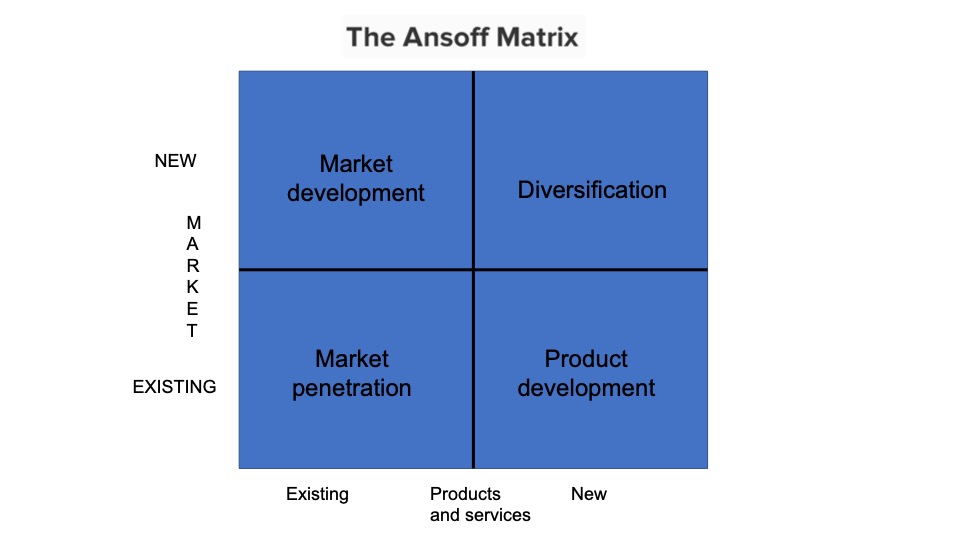What is Market Penetration Strategy? Guide & Examples
Everyone wants to expand their scale of operation. This might seem pretty straightforward, considering good and effective growth means your company is witnessing increases in revenue, brand recognition, customer loyalty, and more. And we know this is a fact by looking at the most profitable and well-known companies today (e.g., Apple, Amazon, etc.).
The question is: What are these highly successful corporations doing to ensure that they are fully ready for tremendous and steady growth?
It doesn’t matter what area of business you are in - you need a strategy, whether you operate a big technology corporation or you are a solopreneur. Your strategy for the game must be customized to your interests, business, and opportunities.
In this article, the area we’re going to concentrate on is market penetration. Let’s delve into it.
What is a market penetration strategy?
The market penetration description may be confusing, based on where you look, since there are two distinct definitions. As shown below, market penetration can typically be defined as either a measurement or an activity. We will analyze all market penetration concepts and how they apply to SaaS in this post.
Market penetration categorized as an activity.
Definition.
Market penetration categorized as an activity is the phase of infiltrating an already existing market with a similar or the same good or service as your competitors and taking market share from them. This process is also known as the technique of market penetration.
Check out: Market Share Definition, Formula and Examples
For example, you may need to establish a market penetration strategy if you are introducing a new product of interest to a different niche of your current market.
The Ansoff Matric
The term market penetration (categorized as an activity) derives from the Ansoff Matrix, created by Igor Ansoff in 1957, which helps businesses design their future growth strategies. The Ansoff Matrix is a 2X2 matrix that describes four different methods for business expansion in which a company reaches a new or established market, either with new or existing goods.
Let’s analyze in greater depth each area of the Matrix.

Market penetration, in the lower left quadrant, is the easiest of the four choices. Here, in your current business, you rely on increasing sales of your successful product: you know how the product performs, and there are not so many surprises in the market for you.
In the lower right quadrant, product development is significantly more challenging because you are launching a new product into the existing market.
In the upper left quadrant named market development, you’re bringing an existing product into a totally new market. You can achieve it by seeking a new purpose for the item or adding new functionality or advantages to it.
The riskiest of the four choices is diversification, in the upper right quadrant, since you are launching a new, unproven item into an entirely new market that you do not wholly comprehend.
What does Market penetration categorized as an activity mean for SaaS.
For SaaS startups that are bootstrapped or unable to invest actively in more expensive growth plans, a market penetration strategy is a perfect growth strategy as it brings a low level of risk
In simple terms, it’s a way to plan how to expand in an increasingly profitable market where there are similar goods and to win market share by taking customers from your rivals.
It is a good bet to put yourself in a developed market as there is a high demand for goods in this field. However, to be competitive and expand alongside existing firms, it demands strong development and execution of policies around the product positioning, pricing, customers’ satisfaction, and marketing.
Market penetration categorized as a metric.
Market penetration, categorized as a measurement, is an estimation of how much a product is sold, calculated as a percentage, compared to the overall estimated market for that product. This measurement is also referred to as market penetration rate.
You can see the formula to calculate market penetration below: How to calculate a market penetration
How to calculate a market penetration
Market Penetration Formula
If you’re using market penetration as a measurement, use the formula given to evaluate how much a service or product is used by consumers relative to the total estimated market.
Market Penetration Rate = 100 x (Number of Customers/Target Market Size)
Let’s analyze in greater depth each area of the Matrix.

In other terms, take the product or service’s existing sales volume and divide it by the combined sales volume of all related goods available on the market.
You can see some examples here: Some examples of market penetration strategy
What does this mean for SaaS.
Depending on the SaaS product’s purpose, it can be challenging to find a market size, as a possible consumer base may be global and include “everyone on Earth.” With the ideal audience demographics, the more details you have, the smoother it would be to make this estimatation.
How do you know you have a good market penetration rate?
A ‘healthy’ rate of market penetration is like depends on your item, industry, and total addressable market (TAM) – often referred to as the overall demand in the market you are in.
The average market penetration for a consumer product is estimated to be 2 to 6 percent, while business products will range from 10 to 40 percent.
You will be doing very well if you can optimize your SaaS product to grab 10 percent of the TAM in every industry!

For example, take the mobile industry: Apple’s global giants have a market penetration rate of 19.2 per cent, with Samsung placing second at 18.4 per cent, Huawei at 10.2 per cent, and several smaller brands bringing the rest of the market share to its 100 per cent pie.
If the penetration rate seems meager, there are ways to improve it.
How to increase market penetration rate?
There are a few common approaches to increase market penetration. Check this to see more: How to create a market penetration strategy?
- Adjusting prices (increasing or decreasing) to draw new audiences
- Channeling more investment in marketing campaigns and ads
- Updating the product to help resolve consumer problems or obstacles and/or enhancing its capabilities
- Acquisitions or collaborations with other companies in the industry.
Pros & Cons of market penetration strategy
As far as market penetration is concerned, you want yours to be high. A high market penetration rate has many advantages.
Think of Nike, for example. When it comes to athletic sportswear, the company is an industry leader. Nike consistently fills up a vast majority of the room anytime you go to the footwear section of a mall-like Foot Locker or Dick’s Sporting Goods.

This ubiquity is because manufacturers such as Foot Locker and Dick’s know that Nike produces profits. They also know that in their shops, their customers seek an extensive range of Nike products. The success and brand name of Nike deserve better shelving space and exposure too.
This is all an outcome of the high market penetration of Nike.
Similarly, when you have a high rate of market penetration, you are entitled to:
Pros of market penetration strategy.
1. Quick Growth
If growing your consumer base is the goal of your sales and marketing efforts, then market penetration is the exact solution you need. When you propose cheaper pricing than your competitors, it becomes easier to attract more customers, and you get what you expected. Thus, rapid growth relies heavily on reduced costs. The more reasonable they are, the higher your odds will be.
2. Expense-effectiveness
It is fair to assume, of course, that penetration contributes to cost-efficiency. If the business operations go the way you expected, a market penetration strategy will lead to cost advantages. By ensuring low pricing, you rest assured that consumers stick with and it also helps that you can buy more goods from your suppliers, which inevitably contributes to better profit figures.
This is why, thanks to reduced costs, some firms take the adventurous path by first purchasing goods in bulk and then adopting a penetration strategy.
3. Competitors’ Battling
Battling with the competitors is one of the most demanding segments of the market penetration strategy. Just imagine that you have lots of rivals who are trying relentlessly to grow and slow you down and take your customers, resulting in smaller profits for you. Following the law of life, the only way out is to battle and beat them to survive at the top.

Low initial pricing, for instance, would push the rivals to switch to different tactics with revised regulations for market penetration pricing. In this way, you will cater to the missed customers, making rivals on the run or totally exit the market.
4. Improve Product Visibility
Distinctive market penetration strategies can increase the reach of a brand in untouched regions and market segments. However, a company can only reach wider buyer segments where it can have superior customer service and achieve competitive advantages.
5. Strengthen Brand Recognition
Market penetration will increase a business’s brand value. For example, to exploit its already distinguished reputation for reliability, uniqueness, and robustness, a watch brand like Rolex may use market penetration strategies.
High penetration rate in the market can entitle you to more than that:
- You are a leader in the industry.
- You can sell goods or services that are already well-established.
- You have a name widely-recognized.
- You get a decent exposure.
- You get excellent brand value.
Cons of market penetration strategy.
The Market penetration strategies benefit from reduced prices to exponentially boost product demand and your market share. As the need for your goods rises, your business keeps costs down on product production costs due to the larger quantity of produce. Market penetration strategy isn’t going to work for all products and all kinds of companies. Now, let’s look at some of the pitfalls of consumer penetration policies.
1. Lower return on Production Costs
It is not always realistic to lower the product price as you wish as things are often expensive to make. This is not to mention it is almost impossible for small companies to succeed when they have to both keep the costs low and produce enough to meet the demands.
It becomes even more tricky when you have to come to grips with rival companies. In certain situations, since the competitors can also introduce a low price structure, concentrating on the marketing strategy, product packaging, and public image enhancement may be a better approach.
2. Lose potential customers.
Some companies who manufacture high-end products commit the terrible mistake of advertising them as a relatively cheap item. Customers who love luxury items would ignore it due to being advertised as a “relatively cheap item.” Therefore, if you concentrate on selling premium goods, note that cheap costs may make your sales smaller, and the product selling may also struggle in the market.
3. Bad reputation.
If the company has several product lines that have luxury items, it would be counterproductive to pursue a market penetration strategy. For example, if you introduce a specific market penetration strategy to a single product, the other product lines might be improperly represented.

Likewise, if a vast number of consumers are acquainted with your cheap goods, it is highly possible that they will doubt you still make premium goods. The status of your company as a luxury retailer may as well vanish altogether.
4. Lack of Results
The strategy of market penetration may not function if the price range is already set low. For example, when the price is previously low, the consumers have by now built confidence in an existing company. Thus, approaching that market and seeking to defeat the competitor would be a pretty ineffective way of action. Instead, a new company may better off focusing on acquiring its value in the business by trying to selling products at low prices.
5. Attract the unwanted Audience
When new folks of the intended audience cross paths with a product due to the company’s market penetration strategy, not all of them will be wanted customers. There’s a possibility that the wrong “product fit” could damage the company’s reputation. It occurs because of incorrect market segmentation.
6. Unnecessary Burdens

Unwanted burdens on other divisions, such as manufacturing, development, and distribution, may be generated from market penetration. Manufacturers may not be able to minimize their prices as fast as expected, and suppliers may not be able to make their operations more effective. Sales reps will not be motivated to push out goods and services as the company would have wanted.
How to create a market penetration strategy?
A market penetration strategy is made up of tactics that are aligned with favorable market conditions. Business conditions—or indicators—should serve as “proofs of concept,” showing whether or not you can adopt a plan.
So, what are the various types of market penetration strategies used by marketers, and what indicators can be used to pick the right one for your company?
1. Penetration pricing
Some retailers aim to raise initial profits by setting prices lower than those of rivals upon entering a new market. In markets where buyers are price-conscious and retailers can achieve high profits by selling vast quantities of goods, this pricing approach works well. When customer loyalty is built, most retailers can go back to a standard selling policy.
A word of advice: Retail practitioners should often remember the overall income of the residents of a particular region while changing rates. If the buying power of a specific demographic is incredibly high, and a low-cost pricing approach is used but the consumers there are not considered “bargain hunters,” there is a risk that they may view your products as “less desirable”.

This marketing strategy should be used really carefully, as overdoing it will lead to negative outcomes. Like, continually raising the price will make consumers think you are a high-profit business. Reducing the cost so much will make them feel that the quality of the goods is sub-standard.
2. Launch new products
Another market penetration strategy that can be used for diversifying a company is to introduce a new product into the market. When it comes to launching fresh goods, companies appear to create a lot of hype within their target audiences. This can be quickly capitalized on by leveraging customers’ high awareness of a given product to create a strong brand identity.
A word of advice: An essential aspect of every product launch is paying attention to customer buying patterns and understanding which kinds of goods they buy. The product launch would be much more powerful when it satisfies customer needs and when the new product is in compliance with demand and people’s buying patterns.
3. Improve the quality of existing products.
True, you must enhance your product quality to genuinely cater to your consumers.
However, you can simply accomplish the work by talking to your customers about the product’s quality, and no significant product change will be required. This is because most customers buy a product because of its attractiveness and do not test whether it proves itself or not. Thus, you can resonate with your customers more deeply and raise your sales revenue by making minor changes to the product and its packaging.
4. Identify potential audiences.
Market penetration may also be interpreted as the exploration of new audiences within a larger population. Many times, a product’s or brand’s saturation among a certain demographic will hinder development. Seeking new niches to sell products is a perfect way to grow your consumer base and reach new markets.
A word of advice: Correctly identifying the individuals in your target market will contribute to the discovery of a new segment. Perhaps you were uninformed that one of your product lines was rising in popularity with a specific group. Geolocation data will assist you in identifying these patterns and refocusing your marketing efforts.
5. Reach out to different territories
This consumer penetration strategy is one of the most common approaches for companies when they want to scale up. Many retailers will start moving elsewhere to set up their business once a market gets saturated. One of the simplest ways to create a retail dynasty is to move to new territory but make sure that the business dynamics be favorable for it to succeed.

A word of advice: Sustainable expansion into new regions requires clever market insights. Big data analytics that expose a new territory’s unique consumer buying patterns and dynamics will help ensure that you are extending your business to the right place densely populated with your target audience.
6. Build a franchise or a chain.
If your business is gaining excellent traction among customers, it may be time to launch a new location. This task is often achieved by retailers in two ways: they can start a chain and operate the company themselves, or opt to franchise and have a franchisee in another area handle their business.
A word of advice: It is crucial for retailers to fully understand the true degree of influence each of their catchments has during the location selection process for the following stores in your chain or franchise. Understanding customers’ behaviors is the only way to avoid sales cannibalism between two sites and ensure that each gets the most market share.
7. Form strategic partnerships.
Some companies choose to seek out to look for other like-minded companies where there are undiscovered possibilities as a method to expand into new markets. Partnerships between retail brands may be established through co-branding deals or even acquisitions and mergers. It’s important to note that the original name may or may not stay alive when a company merges.
If your company has resources, you can consider acquiring a smaller company or competitor in your area to widen your customer base and your product lines/capabilities.
A word of advice: It is challenging to find synergies with like-minded companies with which to combine or create collaboration arrangements. Retailers who use geolocated data to detect positive buying patterns for particular goods will then use this knowledge to identify and collaborate with companies who market the same products in the region.
8. Augmented Marketing
The sudden rise in a product (or service) advertising will lead to dramatic outcomes. Advertising, for example, can be a fantastic way to increase brand awareness. Companies do have a choice of either making their campaigns long-term or short-term; which option works best will depend upon their requirements and budget.
A word of advice: The critical thing to note is that the campaign, regardless of its scale, must be well-planned and figured. In this era of cutthroat rivalry, a quick counter-advertising effort created by your rivals can destroy your campaign
9. Focus on Distribution Networks
One of the most constructive market penetration strategies is the strategy of Distribution Networks. Usually, this strategy entails opening up additional distribution channels by concentrating on a single distribution channel.
For example, if retail sales are your central channel, you may want to learn how to acquire new media such as telemarketing, e-mail marketing, and internet marketing.
10. Think outside the box
Although the whole market penetration method seems straightforward and somewhat monotonous, it’s a significant challenge if you think about it. You need to be unique and incredibly inventive in your strategy to conquer the challenge.
A monotonous marketing approach will only bring about disappointing results and limit the potential for success. So, as a matter of fact, it requires different thinking to change the penetration strategy. By becoming more creative and adding value to your products, you are one step nearer to success.
You might consider the following acts:
-
Educate the customers: This is important because most consumers nowadays are uncertain of the product’s quality and its value.
-
Simplify the buying process: Many profitable companies give credit to their buyers, thus increasing their purchasing power.
-
Expand the sales network: Having the product accessible in more places and offering more shipping methods and support services will make you sell more.
-
Encourage referrals: If you can convince your clients to recommend others, you can boost your sales quite sustainably. But how can you do that? There are several ways, for example, to those clients whose referrals are converted, you might give gift coupons or loyalty points.
-
Change product designs: By changing your product designs once in a while, your sales conversion chances significantly increase. For example, instead of a hard-bound book, you could make it a paperback, making the product look more user-friendly and more environmentally friendly.
-
Partner with influencers: Businesses tend to work with influencers to spread the message about their merchandise. Famous celebrities on social media sites (Instagram, Facebook, Twitter, and LinkedIn) with a large following will affect a product’s sales.
-
Integrated marketing: Integrated marketing allows customers to connect with a brand or organization to provide a cohesive and reliable experience. In a complex and confusing world of marketing, integrated marketing helps to combine all marketing efforts. For example, an item can be advertised across multiple media (YouTube, television ads, mobile ads, etc.).
-
Field Marketing: Field Marketing is carried out by professionally experienced marketers that add to the brand management, relationship management, lead generation attempts of a client/company. Targeted direct sales campaigns, merchandising, auditing, sampling, presentation, experiential marketing, roadshows, and events are all part of this method. Field marketers can assist consumers in rapidly becoming addicted to a commodity, allowing for greater market penetration.
Some examples of market penetration strategy
1. Example 1:
Market penetration, categorized as a measurement, is an estimation of how much a product is sold, calculated as a percentage, compared to the overall estimated market for that product. This is also referred to as market penetration rate.
Let’s look at an example to help you understand it better:
A wristwatch is a popular accessory of everyday wear. It has a vast market opportunity.
Let’s say 300 million is the target audience number.
Let us also say that 30 million of the 300 million future consumers have wristwatches. The number of people who wear watches (30 million) divided by the overall target audience is the formula for market penetration (300 million). Wristwatches have a market penetration of ten percent, as presented as a metric.
Market Penetration Rate = 100 x (Number of Customers / Target Market Size) Market Penetration Rate = 100 x (30 mil / 300 mil) = 10%
2. Example 2: Netflix’s penetration pricing strategy
Netflix is a shining example of penetration pricing done correctly. People often worry about their Netflix subscription fees increasing or their one-month free trial period expiring. Despite all this grumbling, people are still willing to pay higher subscription fees in return for an unlimited stream of quality media content.

Today, Netflix is the industry leader in the United States, accounting for more than half of online subscriptions. Other OTT companies are following suit by deploying penetration pricing to draw qualified leads.
3. Example 3: Android vs. IOS
Let’s take another example, two main smartphone OS that use drastically different pricing strategies.
Android seeks for broader market penetration with a penetration scheme. Android phones, with Samsung leading the way, are sold at a significant discount or at a much lower price than Apple phones in the hopes of luring consumers to the brand. This strategy also brings the Android marketplace to a wider variety of buyers, while Apple follows a skimming policy, offering high-cost products that scrap off the top for a limited market share.
Many smartphone companies also follow the Samsung penetration pricing. Providers sell inexpensive or even free smartphones in return for customers’ long-term commitments. Consumers get hyped up about the discounted phone but fail to see that they have fallen prey to the company, as they will be more likely to invest money in the company in the near future.
4. Example 4: F&B industry
Many food products are launched in the market with a penetration pricing strategy. A few companies also give away free packets of their new items by sponsoring events and supplying sample packs to participants.
When you step into a store, you will sometimes see commercials for low introductory discounts on specific new products, which are great examples of penetration pricing. Costco and Kroger apply penetration pricing for organic products to increase sales of the products. As organic goods have a higher margin, and thanks to economies of scale, these grocery chains make profits from increased demand and large volumes of sales.

Another prominent case is Starbucks, a high-end coffee shop that often launches fresh and seasonal coffees and beverages at a cheaper price point to entice customers to try them. As buyers have grown used to these items on the menu and have shown a favorable reaction, Starbucks withdraws the penetration pricing offers and continues selling them at regular retail rates.
5. Example 5: Dunkin’
Dunkin’ (formerly known as Dunkin’ Donuts) was founded in the 1940s in Quincy, Massachusetts. Since then, Dunkin’ has become a name that is internationally recognized. Dunkin’ has expanded significantly and has opened stores in 46 countries. In reality, worldwide, there are 12,500 Dunkin’s (9,000 of which are in the U.S.). In terms of market penetration, Dunkin’ proceeds to tap into their huge and supportive market by introducing and maintaining that large portion of their stores in the US.
Dunkin’ realizes where their buyers are and why the buyers want a Dunkin’ store on every… yeah, city block.

Dunkin’ has effectively penetrated the industry not only by opening and retaining a significant number of stores in the US but also by making specific improvements to their logo and menu.
They changed their names, most noticeably, from Dunkin’ Donuts to Dunkin’. Since coffee and other beverages account for 60% of the company’s sales, the “Donuts” part of their original name was likely misleading.
“Our new branding is a clear signal that there’s something new at Dunkin’. It speaks to the breadth of our offerings,” said the Dunkin’s CEO.
Apart from donuts, the brand name change often indicates to consumers that there are a lot of other menu options available. The name change was actually followed by a number of new menu items, including nutritious choices as well as non-dairy and vegan options like Beyond Sausage and almond milk.
All of these adjustments expanded Dunkin’s customer base and targeted demographic by satisfying more people within the market they were already penetrating.
Final thoughts.
Market penetration strategy includes concentrating on selling more of your SaaS product into an existing market in order to obtain a higher market penetration and more of your competing companies’ customers.
We have only discussed a range of reasons why market penetration is so beneficial for the long-term growth of your business. And, as you’ve seen during this blog post, it’s a low-risk, high-effective development plan.
It is possible to grow your market penetration rate and steadily achieve superiority in your market through careful planning around pricing, competitors, increasing your sales activities, and make the required improvements to your product. There are many market penetration strategies for you to choose, plan, and apply to at your company, so read this article to determine what is your company’s best option and get started right away.
New Posts






